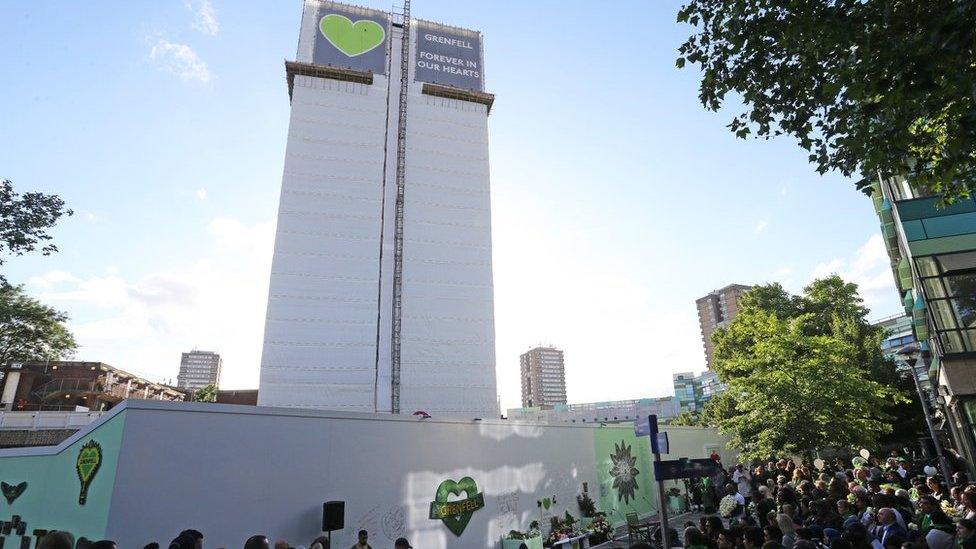Leeds 'cladding fire risk' costs flat owners £400 a month
- Published

Abigail Tubis lives in a building which is covered with a high-pressure laminate (HPL) cladding
People living in high-rise flats covered in flammable cladding in Leeds are having to pay fire wardens £400 a month to keep their homes safe.
Abigail Tubis lives with her husband in St George's Building, which is covered with a high-pressure laminate (HPL) cladding.
Flat owners were told in October the building was a fire risk and the cladding should be removed.
The building is one of 13 in Leeds the fire service deems unsafe.
West Yorkshire Fire and Rescue Service (WYFRS) wrote to those responsible for the buildings last month, which all have unsafe cladding or insulation.
The service asked to see plans and a timescale of when the material would be removed, giving the building owners until midnight on Friday to respond.
More stories from around Yorkshire
The letter was prompted by the Grenfell Tower inquiry and the fire at student accommodation in Bolton last month.
Whereas aluminium composite material (ACM) cladding was used on Grenfell, HPL was used at The Cube in Bolton.
The government has set aside £200m to remove ACM from privately owned blocks, and there have been calls for the funding to be extended to other forms of cladding.
Mrs Tubis said she is being "crippled" by the cost of making the building safe, as residents are paying £36,000 a month between them for a fire warden service until the issue is resolved.
"If we don't pay for that then we would be issued with a prohibition notice that means we can't live in our homes," she said.

St George's Building is owned by the Diocese of Leeds
"We have had an estimate that the remedial works will cost millions of pounds, so for myself and my husband we are talking £25-30,000 which we simply don't have."
She added: "We can't sell, we are trapped. My husband and I wanted to start a family, but that's not going to happen any more; it's just overwhelming that we are being ignored and no-one is helping us."
Deputy chief fire officer Dave Walton, from WYFRS, said: "The safety of the residents living in these premises is first and foremost in our minds, we are conscious that this must be a worrying time for them.
"We will be working through the plans put forward, which are technical in their nature and unique to each property, as quickly as possible.
"We will not shy away from using our powers to prohibit a building, or restrict parts of it, if the plans put forward are inadequate or where no plans are received."
The Church of England Diocese of Leeds formally owns the building, but said responsibility for the building was with the head leaseholder.
HPL is different to the material used in the cladding on Grenfell, but is still combustible.
This type of material is not currently covered under a government fund to replace flammable cladding.

The fire at Grenfell Tower killed 72 people
A spokesperson for the Ministry of Housing, Communities and Local Government said "Residents' safety is the government's priority and we have repeatedly made clear that building owners must ensure their residents are safe in their homes.
"This means all cladding systems, including high-pressure laminates, that do not conform to our strict building safety standards must be removed, and building owners should do all they can to protect leaseholders from costs."
She added testing was being carried out on cladding materials, including HPL, to assess whether any further action was necessary.

Follow BBC Yorkshire on Facebook, external, Twitter, external and Instagram, external. Send your story ideas to yorkslincs.news@bbc.co.uk, external.
- Published6 December 2019

- Published18 November 2019

- Published29 October 2019

- Published12 July 2019

- Published11 July 2019

- Published5 April 2018
